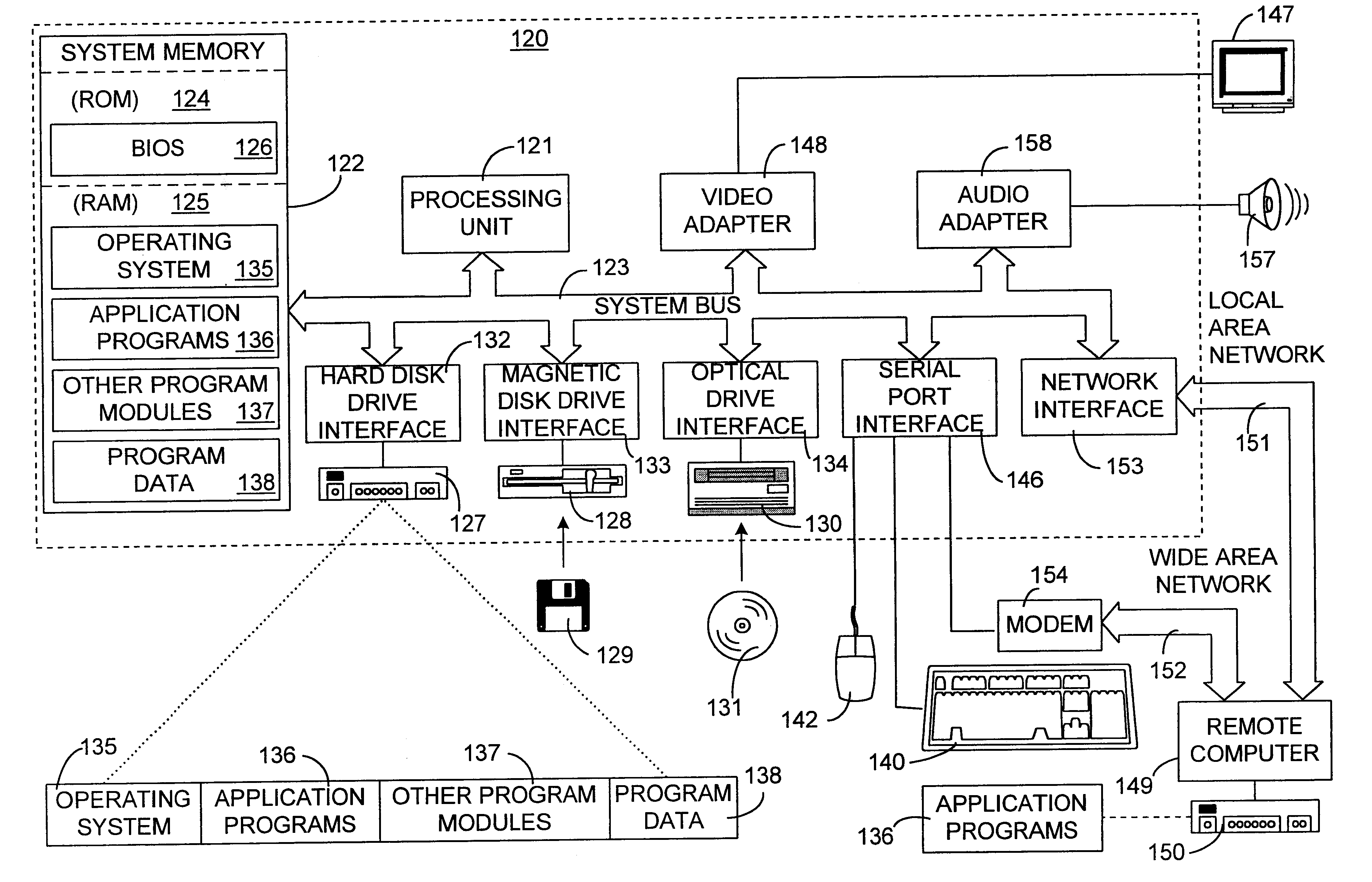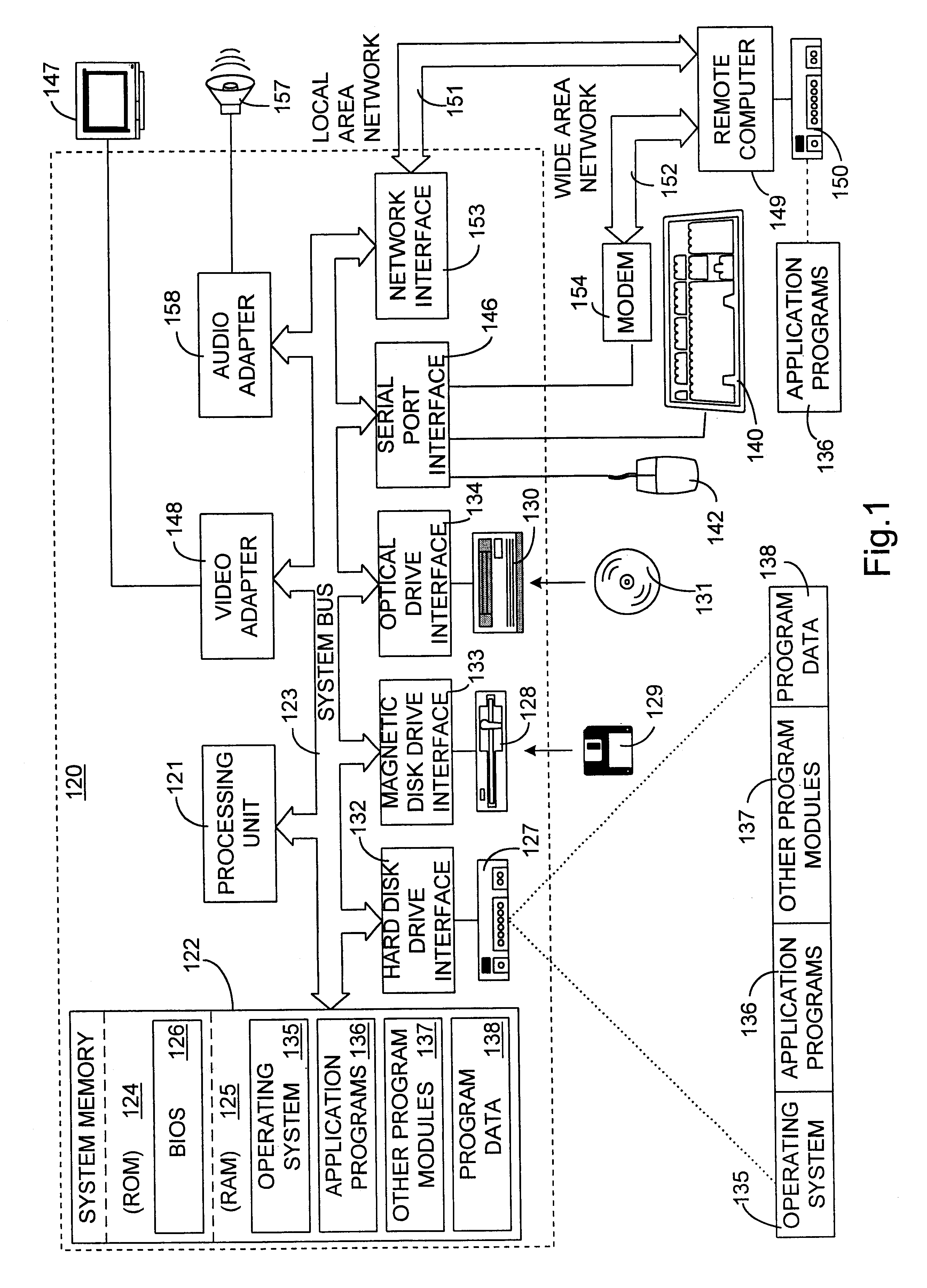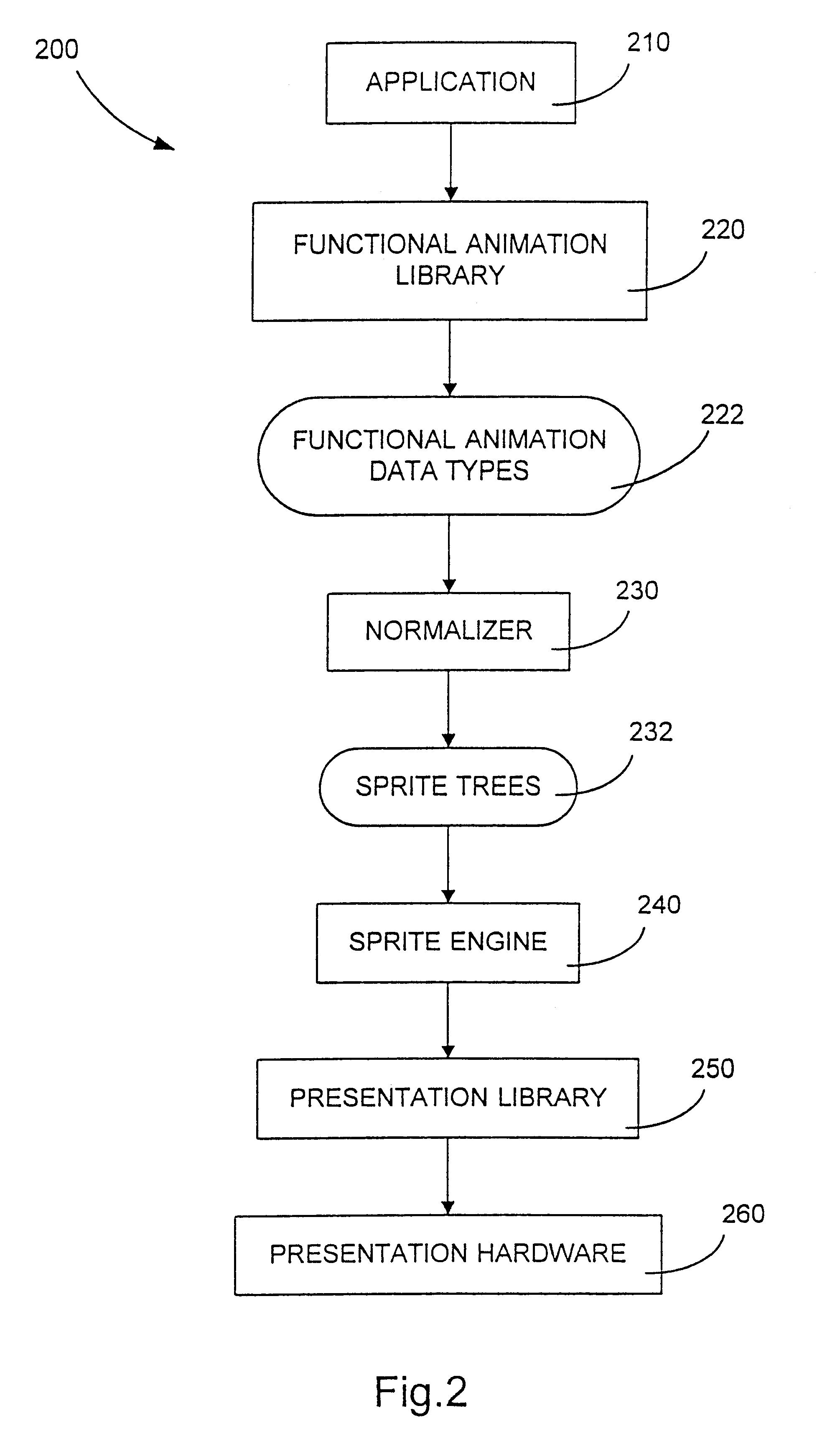Functional animation including sprite tree generator and interpreter
- Summary
- Abstract
- Description
- Claims
- Application Information
AI Technical Summary
Benefits of technology
Problems solved by technology
Method used
Image
Examples
example # 2
EXAMPLE #2{tc "Example #2".backslash.1 5}
A second example useful for describing the animation process of the invention is an animation that displays a bitmapped image (obtained from a suitable source such as a file on a computer disk) moving along a path of circular motion on the video monitor 147. Four appendices (A-C, F) contained in provisional application serial No. 60 / 093,487 that are incorporated herein by reference contain source code for implementing an exemplary embodiment of the sprite engine. Those listings contain copyrighted material owned by the assignee of the present invention. Reference is also made to the Dr. Dobbs article incorporated by reference in this application which describes use of the functional programming language FRAN to define circular motion as well as other functions which can be combined to define more complex animations.
Listing 1
The Fran code for circular motion:
moveXY waggle wiggle (importBitmap "pat.bmp"), where
wiggle = sin (pi * time); and
waggl...
PUM
 Login to View More
Login to View More Abstract
Description
Claims
Application Information
 Login to View More
Login to View More - R&D
- Intellectual Property
- Life Sciences
- Materials
- Tech Scout
- Unparalleled Data Quality
- Higher Quality Content
- 60% Fewer Hallucinations
Browse by: Latest US Patents, China's latest patents, Technical Efficacy Thesaurus, Application Domain, Technology Topic, Popular Technical Reports.
© 2025 PatSnap. All rights reserved.Legal|Privacy policy|Modern Slavery Act Transparency Statement|Sitemap|About US| Contact US: help@patsnap.com



